What Are The Differences Between Coffee Processing Methods?
Natural coffees, dry coffee, wet, hulled, honey processing, fermentation … What does it all mean? And what does it have to do with your brewed coffee?
There’s a lot of steps between harvesting a coffee cherry and producing green coffee that’s ready to roast.
There are several technical processing methods for coffee. But since they each have an impact on the final flavor of your brew, you’ll want to keep them straight.
So from coffee drying to fermentation to natural coffees — and all the other names you’re fumbling with — here’s a look at the main coffee processing methods.
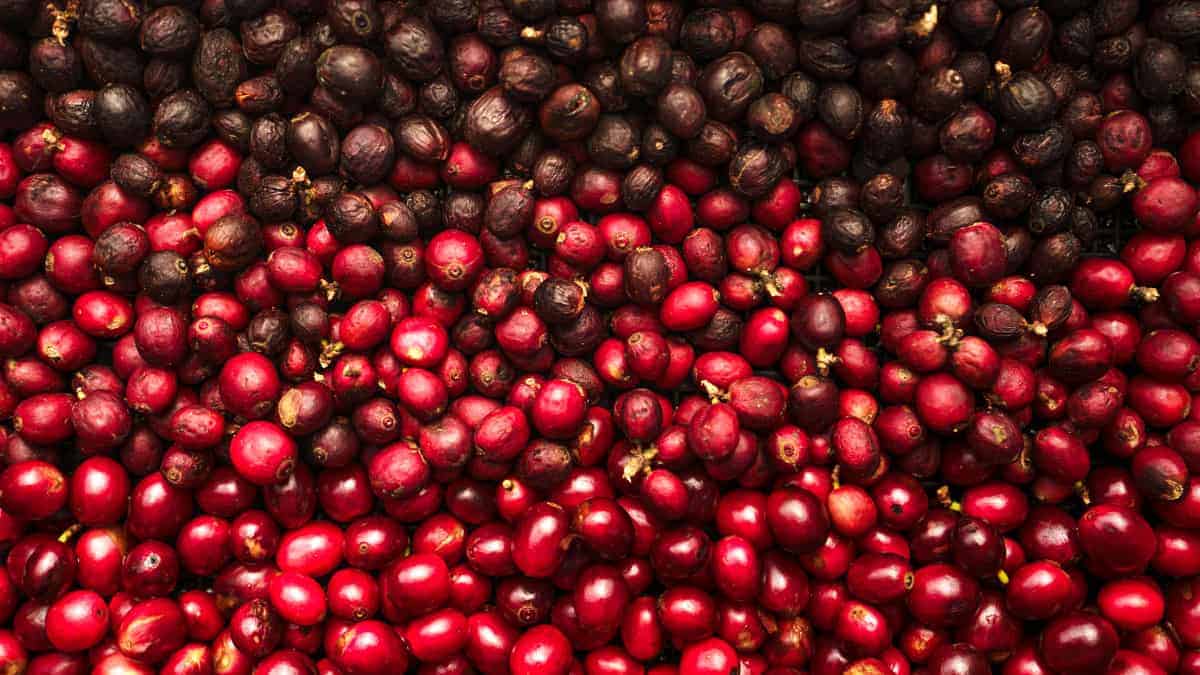
What Are The Methods For Processing Coffee
Processing coffee is a little understood, but crucial, part of coffee production. It’s the process which prepares coffee beans for roasting and brewing.
Starting with the plucked cherry pits, processing involves shelling or hulling the coffee cherry’s skin and (often) washing and drying.
The processing method has a major impact on flavor. Depending on the process you use, coffee beans will have varying amounts of naturally-occurring chemicals. The amount of those chemicals present during roasting impacts the coffee’s final flavor and aroma.
A LOT goes into making one little (delicious) cuppa’ joe!
There are practically as many ways to process coffee as there are ways to prepare it, but here are the main processing techniques:
- Natural/dry processed: Coffee cherries are sun dried and hulled.
- Washed/wet processed: Beans are rinsed, fermented, and rinsed again before drying.
- Honey/pulped natural processed: Beans are rinsed and left to dry with part of the coffee cherry fruit left on.
- Wet hulled: Each coffee bean is depulped, dried in separate stages, and finally what’s left of the coffee cherry is hulled wet before final drying.
- Fermented: Fermented coffee is processed through extended fermentation in tanks, often devoid of oxygen.
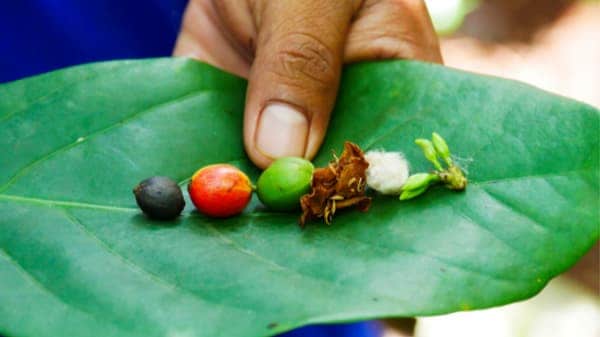
Natural Processed — Dry Process
This should be the simplest way to process coffee. Coffee cherries are left to dry in the sun, hulled (the cherry fruit and skin are removed), and left to rest before exportation and roasting.
But there’s more to it than that. The world’s most sophisticated brew couldn’t be that simple!
Method
In dry processing, freshly picked coffee cherries are laid out in thin layers and left to dry in the sun for days. Often, the cherries dry on brick patios or raised beds, which allow air to flow better around the cherries. This dries them more efficiently and evenly.
The cherries are also turned regularly with a rake for even drying and to avoid fermentation or molding.
After they’ve been thoroughly dried, the fruit “flesh” (what a name) is removed, that is, the hulling process begins. Then the hulled cherry pits — or green coffee beans — are stored and left to “rest” before exportation.
Dry processing requires little startup power and resources. It’s mostly a space and time issue.
But dry processing is also inconsistent. There’s one primary factor involved in the process — the sun — so weather and relative sunpower during the 12-14 days it takes to dry. Because of this, imperfections like poor cherries/beans tend to be more noticeable, too.
Flavor
Naturally processed coffees tend to be a little sweeter, fruitier, and a little acidic. They’re complex, but smooth cups.
If not turned regularly or dried evenly, dry processing can lead to “ferment,” which is a slightly fermented, “off” flavor. Or if dry processing isn’t done carefully enough, it can lead to a chalky or “dirty” aftertaste.
Regions Known For
Dry processing is common among coffee beans from Yemen, western Ethiopia, Brazil (in the dry season), and Indonesia.
Natural coffee tends to hail from naturally dry regions.
Afterall, a humid or rainy climate wouldn’t be a good place to dry a cherry with the fruity flesh intact. The darn things wouldn’t dry well or fast either, and that’s if they dried faster than they could grow mold or rot. Ick.
Plus, if you live where water is scarce, you’re going to appreciate a production method like the natural process that doesn’t need a ton of H20.
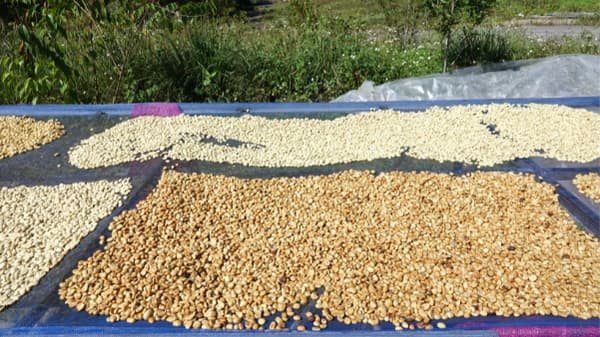
Washed Coffee — Wet Process
The washed process is relatively new. It involves washing the cherry skin and fruit flesh off, separating undesirable beans, and a fermentation process to remove the cherry mucilage.
Method
Wet processing is more involved than natural processing.
In wet processing, the cherries are depulped quickly, within a day or so of harvesting. They’re rinsed/washed (and often pre-sorted by a float test to remove defects) and the fruit flesh is shucked.
There’s still a little sticky fruity stuff left on the coffee beans, called mucilage, which can’t be hulled easily by water.
Then, the beans are run through a fermentation tank for 12-36 hours to remove this sticky coating.
While fermenting, naturally-occurring enzymes in the beans will eat at the mucilage, giving off acids, gasses, or alcohols.
The beans are given a final rinse. Then they’re dried on raised beds like brick patios or drying tables (like dry processed coffees), or in a parchment layer, for about 8-10 days.
The wet processing method is more consistent than dry processing. Many producers (a.k.a. farmers) prefer it for the resulting consistency in roasting and cupping.
And, although the wet processing method is more involved, it’s actually easier on many producers, since it’s faster and requires less labor. Water and fermentation shoulder much of the work burden.
Flavor
Washed process coffees are clean, bright, and fruity. Favored by countries known for their acidic coffee, washed coffees also tend to be more acidic.
Thanks to the fermentation process, wet processing can also lead to coffee that’s almost wine-like with fermented notes. But, most describe a wet processed coffee as “clean.”
Regions Known For
The wet process is most common in Central and South America. But you can find other farms and smaller regions around the world which use the washed process, as long as they have good access to water.
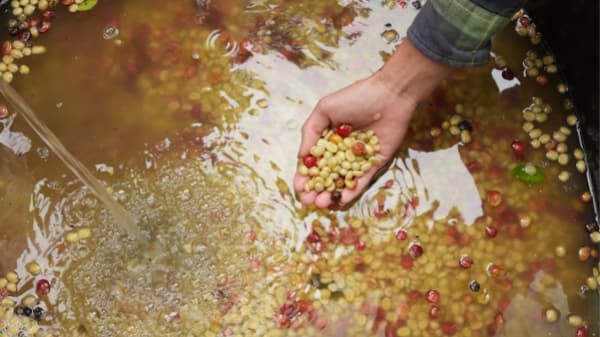
Honey Processed — Pulped Natural Process
The honey process is something between the washed process and dry process. Honey processed coffee gets its name from the sticky texture of the mucilage left on the honey during drying.
Method
In pulped natural processing, the fruit of the coffee cherry is removed first (just like wet processing) and then left to dry, much like natural processed coffee. The sticky mucilage is still on the coffee cherry during the drying process, however.
This “honey” mucilage changes during honey processing. The bean starts as white or yellow honey, which is turned often (like natural processed coffee) to dry better.
During the drying process, the bean ferments naturally to become red honey and finally black honey thanks to oxidation. Red and black honeys are turned less often.
Sometimes beans aren’t left to ferment as long, remaining yellow or even white honey. The choice to ferment to each color is just a preference; beans won’t always be left that long.
Flavor
Honey processed coffee is more complex and sweeter than washed coffees, but less fruity than natural processed coffees. It doesn’t tend to be too acidic, thanks to the dry fermentation.
You can almost compare a honey processed coffee to apple juice in sweetness.
Regions Known For
Honey processing is limited to regions with low humidity (because we’re air drying just like in natural processing). Dryer climates allow the mucilage to dry out without fermenting too much either.
Brazil is especially known for the honey process. Ethiopian coffees are also sometimes honey processed instead of dry processed, since it doesn’t require much water. You can also find Tanzanian and Costa Rican coffees made with the pulped natural process.
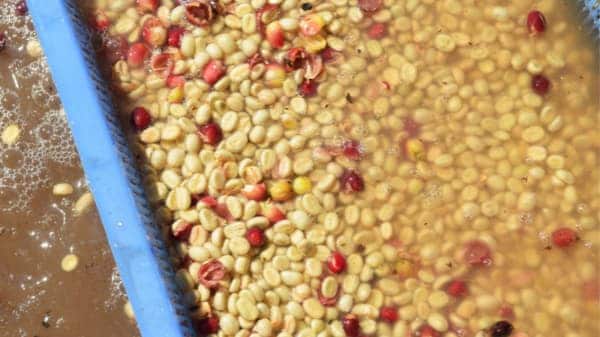
Wet Hulled
Don’t confuse wet hulling with washed coffees! This less common method of processing coffee, popular in Sumatra, creates an unusual, but distinct flavor with little acid.
The Method
In wet hulled coffee processing, coffee cherries are run through a hand-cranked machine called a depulper, which removes the skin and some of the fruit flesh. The mucilage is then fermented and washed off.
Instead of leaving the coffee beans to dry for a week like in the washed process, in wet hulling, depulped and fermented coffee beans dry for a matter of hours.
Wet processed coffees dry until their moisture content reaches around 10%, but in wet hulling, coffee beans are dried to about 50%. The coffee beans will still be engorged when taken off the coffee parchment they’re left to dry on.
These coffee beans will be sold pretty quickly, rather than left to “rest” and store like natural processed coffee.
When the roaster or other intermediary buys the beans, they’ll be dried again (reaching a moisture content of about 25-35%).
The coffee beans are then run through a machine called a wet-huller (hence the name!) to remove any leftover parchment. Finally, the beans are air-dried again, ultimately reaching the desired 12% moisture content.
Flavor
This involved method of coffee processing produces specialty coffee that’s known for its body but without the acidity wet coffee beans are known for. This coffee is earthy, but bright, and might have notes of herbs, tobacco, or cedar.
Regions Known For
Wet hulling is an Indonesian practice, primarily on Sumatra and Sulawesi. The local name, giling basah, means wet grinding, a referenced to the wet-huller machine.Like most Indonesian coffee, coffee beans produced through giling basah processing are usually darker, earthier roasts.
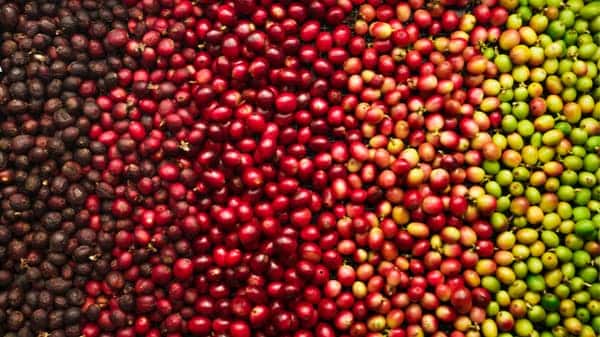
Fermented Coffee
Most coffee processing methods require fermentation, of course. But there are also coffee processing methods that revolve around fermentation.
First, let’s get a couple things straight. There are two basic types of coffee fermentation: aerobic and anaerobic:
- Aerobic: Aerobic fermentation takes place when oxygen is present. In the natural process that involves drying by air in the shade, slow aerobic fermentation takes place, resulting in stronger coffee.
- Anaerobic: Anaerobic fermentation happens in oxygen-free environments, usually in fermentation tanks when it comes to coffee.
Carbonic Maceration Processing
A popular type of anaerobic fermentation is carbonic maceration. In carbonic maceration, the whole coffee fruit (not coffee beans!) are put in a steel tank and carbon dioxide is pumped through.
The CO2 displaces oxygen, forcing it out of the tank, and begins to eat away at the mucilage. The process can take as long as months.
The coffee cherries/beans are monitored and when the time is right, the green coffee beans are soaked in water to stop the fermentation process. Then the typical coffee drying process occurs.
Other anaerobic fermentation processes usually work the same way, but don’t involve carbon dioxide and take less time.
Note: Carbonic maceration is sometimes considered part of the washed process, even though the fruit flesh is left whole here before fermenting.
Flavor
Carbonic maceration and anaerobic fermentation produce more intense flavors thanks to the pressure in the tank.
These coffee beans can produce fruity and almost wine-like flavors (which makes sense, since many wines undergo carbonic maceration, too). Anaerobic treated coffee beans tend to be nice and bright.
In anaerobic fermentation processes, you can infuse other flavors into the drying cherry/coffee bean. Cinnamon, licorice, bananas, pears, etc., might be added to the coffee beans in the tank, adding their flavors to the coffee beans/resulting coffee.
It’s one way to get flavored gourmet coffees.
Other Methods
Although we’ve discussed all the major ways to process coffee, there are a few more modern techniques you may hear about in the coming years.
Most of these are specific to one farm or group of farms and many are variations on carbonic maceration/anaerobic fermentation.
- Lactic processing: La Palma y El Tucan coffee plantation in Colombia is putting anaerobic fermentation with lactic acid on the map.
- Finca Kilimanjaro’s experimental processing: This coffee farm is known for experimentation with flavor-infused and wet fermentation.
- One experiment from Finca Kilimanjaro is cascara fermentation. It uses a cascara-based tisane (like a tea) during fermentation for 12 hours before drying.
Post Coffee Processing
So those beautiful beans have been washed (maybe), dried, hulled, etc., etc.
What now? Those bad boys are prepped for roasting.
Green coffee beans undergo any final cleaning, polishing and sorting (grading) in the dry mill. In the grading process, defected coffee beans are removed.
The better beans will be bulk packaged, stored, and sold to exporters/exported directly to roasters.
Roasting is its own science, which we won’t get into here.
Suffice it to say that green coffee is roasted to produce desired results (light, medium, dark) and any decaffeination process takes place. Sometimes coffee beans from many farms/regions are blended to create unique roasts.
Finally the roasted coffee is sold to coffee shops or consumers and, hopefully, the brewed coffee is delicious!

